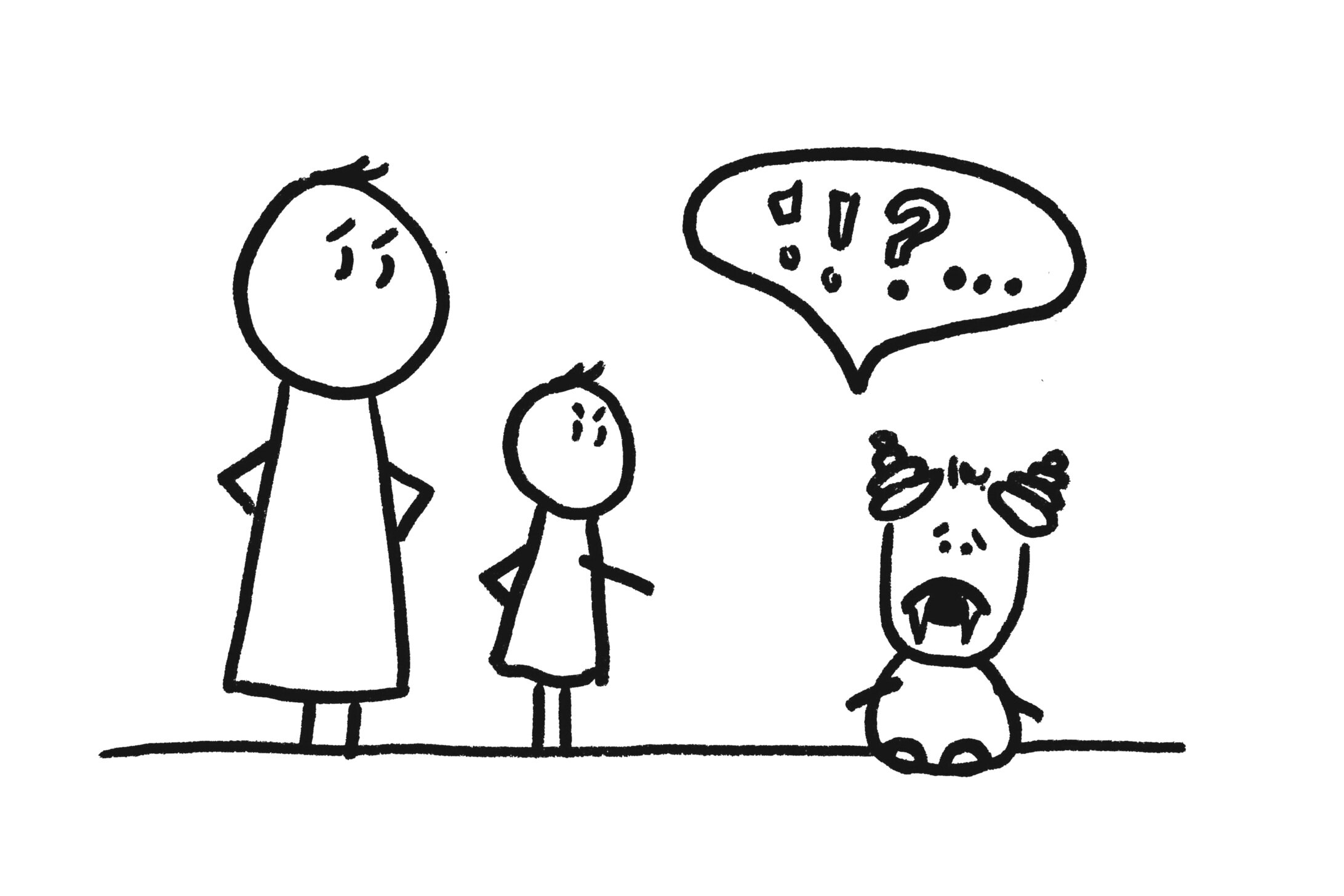Name the Bully: Externalization of Anxiety
This week I worked with a whole bunch of children and families, strategizing about how to deal with bullies. Nobody likes a bully, and I am especially indignant on behalf of my kiddos when they come in and tell me that they are being bossed around by someone that lies to them, makes them very uncomfortable, and does not have their best interests at heart. The bullies of this week went by many names, including Germy, The Exaggerator, Mr. EvenSteven, Dr. Perfect, and "The Donald" (no, I did not make that up- credit to one politically opinionated 11-year-old).
These fiendish characters are, of course, anxiety.
Our mind's most powerful bully, anxiety constantly tricks us into feeling worse than we need to, feeding us unrealistic predictions about scary but improbable outcomes. Telling us we can't handle uncomfortable or difficult situations. Demanding that we avoid the "danger" of the sleep-away camp or the risk of raising our hand, demanding we escape the discomfort of that speech or that awkward conversation.
But here's the catch- my kiddos and I have chosen, in each case, to name that bully and give it a physical form. Imagined in detail, drawn on paper, propped in a chair, and given a voice. And it has made all the difference.
Say hello to our new frenemy, Anxiety with a capital A, and experience the worry-busting power of externalization.
What is externalization?
In short, externalization is naming the bully in your brain, taking that tricky creature out of your head and placing it before you for judgment in the real world. Externalization is a very helpful ingredient in the treatment of anxiety. Externalizing worry thoughts helps to take the spook out of spooky predictions, because by treating anxiety as another creature in the room with its own voice and opinions, kids- and adults- are empowered to disagree.
Naming and drawing the bully harnesses two of a child's main developmental strengths:
the awesome power of a young imagination
kids' natural desire for independence and autonomy.
By helping kids mentally separate from anxious thoughts, they get to see that Anxiety is not some truth-telling Bad News Prophet, but rather an annoying trickster trying to scare kids into doing what it wants. As if by magic, the act of naming "Mr. Worry" leaves kids with better perspective on how realistic anxiety thoughts are. They can more easily detach from worry thought spirals. And best of all, that silly name lets children begin to push back when Mr. Worry starts to give commands to avoid scary-but-safe stuff.
How do I do this with my kid?
Game to try this yourself? Here's how I lead the activity in my office: Tell your child that you have noticed that worry has been really pushy recently, kind of like a bully, and you want to figure out who you are dealing with. Ask your child to use his imagination and draw what he imagines anxiety looks like. I'll usually give hesitant kids a few examples- a human-like character, a stick figure, a puffball, a scribble with 2 eyes and a mouth... you get the idea. Once your child has drawn some kind of creature, encourage your child to name it. Again, for kids that are hesitant or who want to make sure they are "doing it right", examples might be helpful: The WorryWart, The Certainty Critter, Scared Sally... or just Bob. I have worked with a surprising number of kids that have chosen to name their anxiety "Bob".
Now, the presence of "Mr. Worry" means that instead of debating with your anxious child (which never goes well) parents and kids can get on the same team against anxiety. Try these phrases on for size:
"I noticed that you don't want to go to the party- what is Mr. Worry telling you will happen when we get there?"
"Hold the phone, is the WorryWart starting to chatter away again about this test? That guy. So annoying."
"Uh oh, sounds like Mr. OhNo is trying to take charge of our trip to the mall. He's so bossy. What is he telling you to do? Could we boss him back?"
"Dr. Perfect is telling you that you have to color your picture exactly right, and that a mistake means it's ruined! Is he telling the truth? What do YOU think?"
"Oh wow, that is a spooky question! I wonder... Am I talking to my child, or am I talking to Scared Sally right now?"
"Germy is telling you that you have to wash your hands again and again right now, but I think Germy might be trying to trick us. How should we show him you're in charge?"
Viola. Once you have that creature in hand, you are no longer on the opposing team, but a teammate in the fight against that bully of the brain. You are not telling your child they are wrong, you are pointing out the tricks of Mr. Worry. Instead of saying no to your child, you are preventing Be-Sure Bob from bossing the family around. The issue is not your child’s fault, but rather Anxiety messing things up.
Externalization provides the ability to call out Anxiety when you see it lurking, get the inside scoop on what it is saying, and help kids challenge worry thoughts all by themselves. By naming the bully and helping kids see how bossy Anxiety is, you might just end up with a kid that bosses Mr. Worry back all by themselves.
